The best drone 2024: top flying cameras for all budgets
The best drones for shooting aerial images
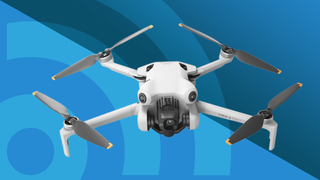
1. The list in brief
2. Best overall
3. Best budget
4. Best all-round
5. Best premium
6. Best DJI Air 2S rival
7. Best value for photographers
8. Best cheap drone for novices
9. Best FPV drone
10. Best compact DJI alternative
11. Best FPV for beginners
12. How to choose
13. How we test
Whether you’re capturing stills or video, the best drone cameras make it easy to shoot stunning aerial images. We've flown the top drones for hundreds of hours, testing each model in-depth to find the best option for every pilot and budget. From the results, we've ranked our favorites in the expert guide below.
Based on our tests, we think the best drone for most people right now is the DJI Mini 4 Pro. For a compact drone that weighs less than 250g, it offers an impressive set of features, including an excellent camera and reliable obstacle avoidance. It's also safe and easy for first-timers to fly, making it one of the best beginner drones. That said, if you're looking for a basic, budget choice to get off the ground, we recommend the Ryze Tello.
Our guide is designed to help your ideal drone. We've covered a spectrum of models in the list below, each extensively tested by our experienced team. We assess factors such as image quality, flying modes and ease of use, as well as those all-important safety features, in a range of real-world scenarios. You can find out more about ow we test the best drones at the bottom of this page, together with in-depth buying advice. If you're a novice pilot, check out our dedicated beginner’s drone guide.

Tim is TechRadar's Cameras editor, with over 15 years in the photo video industry and most of those in the world of tech journalism. Tim has developed a deeply technical knowledge and practical experience with all things camera related. He’s also worked in video production with clients including Canon, and volunteers his spare time to consult a non-profit, diverse stories team based in Nairobi. Tim notes, "As you'll see in the list below, DJI continues to dominate the drone market in 2024, producing models for every niche – from entry-level to professional. That said, we've also covered options from a number of other drone manufacturers, particularly where they represent good value alternatives."
The quick list
If you don’t have time to read our full list of the best drones, you can use the round-up below for a quick overview of the the best options for your needs and budget. If you find a drone that takes your fancy, use the links to skip down to our full write-up.
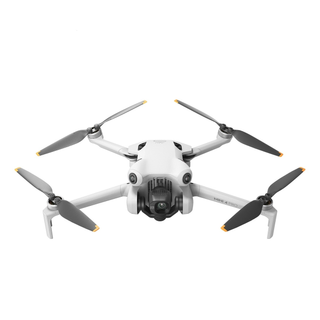
The best compact drone overall
With 360 obstacle avoidance and improved image quality, the DJI Mini 4 Pro packs pro-grade performance into the best compact drone.
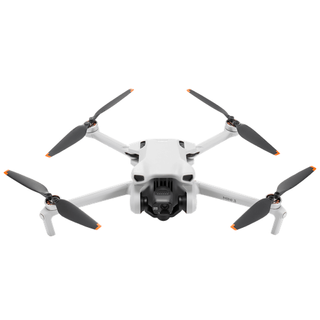
The best budget drone without collision aids
If you don’t need collision avoidance, the Mini 3 is the best budget drone you can buy; small, lightweight and more affordable than the Mini 4 Pro.
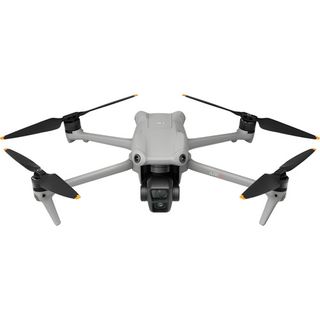
The best all-rounder for photographers
The dual-camera DJI Air 3 hits a sweet spot: it's relatively affordable yet still boasts top performance, great image quality and a deep feature set.
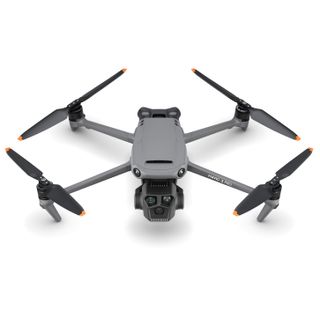
The best premium drone
The world's first triple-camera consumer drone is one for aerial image makers, with DJI's industry-leading flying and safety features to boot.
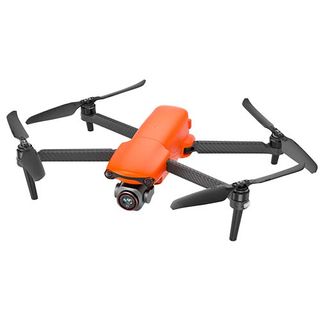
The best alternative to the DJI Air 2S
Capable of shooting 5.4K footage at 30fps using a 1-inch sensor, it shares a remarkably similar spec sheet to the DJI Air 2S and is a decent alternative.
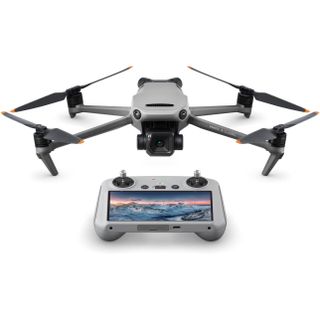
The best value camera drone for enthusiasts
The Classic edition of the Mavic 3 lands at a lower price by losing the telephoto camera of its pricier sibling, yet keeps its class-leading 4/3 main sensor.
Load the next 4 products...
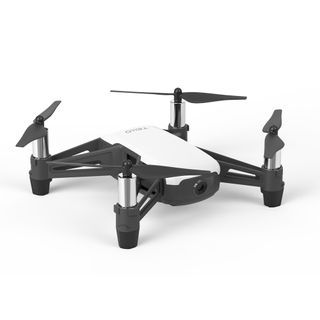
The best cheap drone for novices
Simple, lightweight and affordable, the Ryze Tello is a fun drone for first-time flyers. Despite its budget price tag, the Tello offers plenty and reasonable flight time.
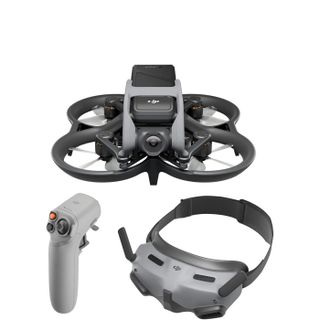
The best FPV drone
With a controller and pair of DJI Goggles, you can shoot impressive 4K/60p video indoors or out, making the DJI Avata the best FPV drone out there.
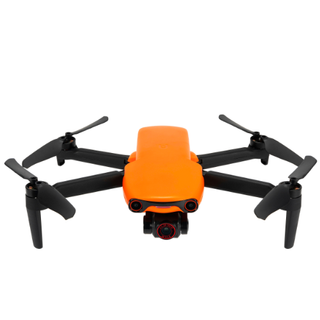
The best compact DJI alternative
The colourful Evo Nano+ is a capable competitor to the DJI Mini 4 Pro, bringing a big sensor and bright lens to the sub-250g category.

The best FPV drone kit for beginners
An accessible FPV kit, we think the BetaFPV is the best way for beginners to try first-person drone flight, complete with goggles and controller.
The best drones 2024
Why you can trust TechRadar
Below you'll find full write-ups for each of the best drones in our list. We've tested each one extensively, so you can be sure that our recommendations can be trusted.
Best compact drone overall
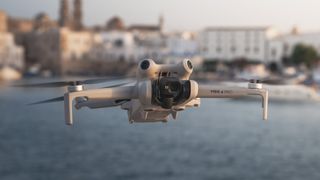
Specifications
Reasons to buy
Reasons to avoid
✅ You want the best lightweight drone: With excellent image quality and obstacle avoidance in all directions, this is the most feature-packed sub-250g drone.
✅ You’re serious about video: Support for 4K 100fps slow-mo and the D-Log M color profile offers additional versatility and finer control of video output.
❌ You’re already happy with your Mini 3 Pro: While the Mini 4 Pro has some new features, many will find that they don’t justify switching from the already capable Mini 3 Pro.
❌ You only fly in the open: Omnidirectional Video Sensing is useful, but only if you operate in complex environments with lots of obstacles.
With a lightweight build and pro-grade features, the DJI Mini 3 Pro was previously our favorite drone. The Mini 4 Pro builds on its qualities to deliver an even better experience, albeit not a radically different one. If you already own a Mini 3 Pro, it probably doesn’t justify an upgrade. But if you’re switching from a different model or buying your first Mini series drone, it’s an excellent choice. Its small, folding design is almost identical to the Mini 3 Pro, as is the regulation-friendly 249g takeoff weight. Also the same is the 1/1.3-inch sensor, which still delivers excellent image quality.
Thanks to processing updates, we found it even better at handling noise in low light. Serious videographers will also welcome the new D-Log M color profile, which offers greater consistency with the Mavic 3. Obstacle avoidance is now omnidirectional, meaning the Mini 4 Pro is even safer than its predecessor when it comes to operating indoors or near trees. We also found ActiveTrack 360° highly effective, making it an easy drone for beginners to fly confidently. If you can afford the DJI RC 2 controller option, you’ll have the best backpack-friendly drone bundle.
- Read our in-depth DJI Mini 4 Pro review
Best budget drone without obstacle avoidance
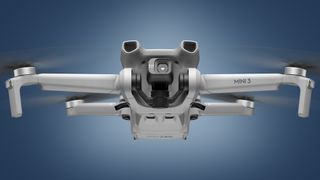
2. DJI Mini 3
Our expert review:
Specifications
Reasons to buy
Reasons to avoid
✅ You’re a first time buyer: The DJI Mini 3 is a great starting point if you’re new to drones, yet still delivers the same image quality as the Pro version.
✅ You’re want the best cheap drone: If you don’t have a huge amount to spend, the DJI Mini 3 is easily the best in its price bracket, offering a lot of value.
❌ You require collision avoidance: Unlike the Mini 4 Pro, the Mini 3 doesn’t feature the added safety net of obstacle avoidance to keep you clear of trees.
❌ You'll fly in strong wind: The Mini 3 can struggle and drift in windy conditions; you’ll find more stability from the Evo Lite+ or larger drones.
If you're a first time buyer, the Mini 3 is the best budget drone you can buy – it's small, lightweight and much more affordable than the Mini 4 Pro. It lacks the obstacle avoidance that its pricier sibling offers, however if you're confident enough to navigate obstacles without DJI's automated safety feature, then the budget-friendly option delivers identical image quality; 4K video at up to 30fps and excellent JPEG and raw images. Its 12MP sensor also rotate to shoot in portrait – handy for social. What you don't get is log color profiles, and that will limit the Mini 3 appeal to professionals who need the editing flexibility for video files.
Another notable absence when compared to pro drones is subject tracking. However, DJI's Quickshots feature is present and a treat for beginners, allowing them to plot an automated flight path and potential capture engaging video sequences. This is an easy drone to start your piloting journey, especially if you get it with the optional controller and with the downward vision sensors and GPS that help with precise hovering. You'll get better image quality and increased stability in windy conditions with pro drones like the Mavic 3 Classic, but the Mini 3 is the one for budget buyers.
- Read our in-depth DJI Mini 3 review
Best all-round drone for aerial photographers
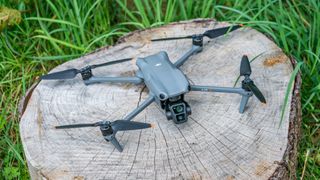
Specifications
Reasons to buy
Reasons to avoid
✅ You want to keep your distance: The Air 3 has two lenses, including a 3x telephoto that lets you get close to the action to make videos from a safe working distance.
✅ You need a sturdy drone for windy conditions: The Air 3 is physically larger than the Mini 4 Pro and has better wind resistance for breezy weather.
❌ This is your first drone: The weighty DJI Air 3 sits in the C1 category of drones and that comes with flying restrictions that you don't get with sub-250g drones like the Mini 4 Pro.
❌ You shoot a lot of video: Both of the Air 3’s lenses have fixed apertures, which are particularly restrictive for shooting video with ND filters in variable light.
Clearly sitting between the Mini series and Mavic Pro series of DJI drones is the Air series, and the latest model is the Air 3. Novices will find a sub-250g model like the Mini 3 more manageable than the Air 3, but you can enjoy much better wind resistance with the larger model, plus a generous 46-minute flight time. We also think beginners will get to grips quickly with the Air 3's easy interface and safety features such as obstacle avoidance.
As a drone with 720g take-off weight, the Air 3 is placed in Europe’s C1 category and that comes with flight restrictions, meaning you need to keep a greater distance from people and animals and events to be safe and legal. However, you can still get close to the action thanks to the Air 3's new 3x telephoto lens. The Air 3's dual cameras are versatile and offer class-leading image quality, too. Its fixed aperture lenses can prove tricky for shooting video with ND filters in variable light, but the 3x zoom lens makes the Air 3 a much more versatile aerial camera than the Air 2S.
- Read our in-depth DJI Air 3 review
Best premium drone
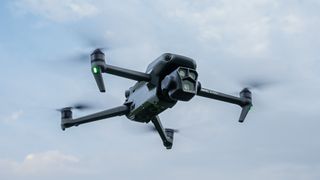
Specifications
Reasons to buy
Reasons to avoid
✅ You need camera versatility: The only triple-camera drone perfectly balances quality and versatility.
✅ You want DJI's best safety features: DJI's most advanced collision avoidance plus advanced return to home ensure accident-free flying.
❌ A single camera will do: The Mavic 3 Pro's main camera can also be found for less on the Mavic 3 Classic.
❌ You don't need all the bells and whistles: There are highly capable and cheaper drones available, while lighter models come with fewer restrictions.
DJI’s new flagship consumer drone was awarded best camera product of the year in the TechRadar Choice Awards 2023, and with good reason. It's the first consumer drone to feature three cameras, ideal for aerial photography and filmmakers who need the most versatile drone on the market. The Mavic 3 Pro's main camera is the same one used by the Mavic 3 Classic and its 20MP Four Thirds sensor and offers the best image quality of the three cameras, together with its adjustable aperture, pro-tier video formats and frame rates. That said, if you need the extra reach from the main 24mm focal length of this camera, both 3x and 7x telephoto cameras produce excellent images.
As a pro drone, the Mavic 3 Pro is also incredibly easy to fly even in windy conditions and accessible to all users, thanks to its excellent safety features and intuitive controls, although its in the restrictive C2 European drone category because of how heavy it is. Another sticking point is its price that makes it overkill for beginners. However, it’s a more portable and less expensive option for pros than the Inspire 3, plus it's even more versatile.
- Read our in-depth DJI Mavic 3 Pro review
The best DJI Air 2S alternative
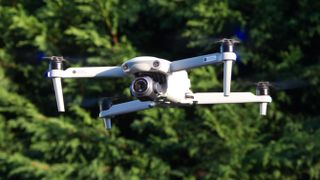
Specifications
Reasons to buy
Reasons to avoid
✅ You want aperture control: Unlike the DJI Air 2S, the Evo Lite+ offers aperture adjustment, making it then best camera for the price.
✅ You like to fly for longer: Up to 40 minutes of flying time means the Evo Lite+ give you more flexibility to adjust for the perfect shot.
❌ You already have the DJI Air 2S: With a similar sensor and feature set, marginal upgrades don’t offer a compelling reason to switch to the Lite+.
❌ You plan to fly in built-up areas: Because it weighs more than 250g, the Lite+ is subject to more restrictions on where you can fly it.
As the flagship flying machine from Autel’s latest line-up of DJI rivals, the Evo Lite+ goes directly up against the Air 2S. Capable of shooting 5.4K footage at 30fps using a 1-inch sensor, it shares a remarkably similar spec sheet. But it also both leapfrogs the Air 2S and the Mavic Pro 2 with its 40-minute flight time and adjustable aperture (ranging from f/2.8 to f/11). The Lite+ model does lack the fourth-axis stabilization of its Evo Lite sibling, but the larger pixels on its sensor give it better light-gathering potential in dim conditions.
Pro drone videographers might think twice about the lack of 10-bit video and D-Log profile, while the omission of side sensors for obstacle avoidance is a shame. But in all other respects, we found the Lite+ to be an impressively versatile piece of flying camera equipment in our review. For the money, its 20MP sensor is probably the best camera available on a drone today, which gives the Air 2S some serious competition.
- Read our in-depth Autel Evo Lite+ review
Best value camera drone for enthusiasts
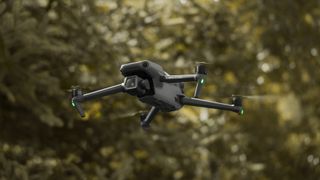
Specifications
Reasons to buy
Reasons to avoid
✅ You need a quality foldable drone: Equipped with a Hasselblad 20MP 4/3 camera, the Mavic 3 Classic delivers the best image quality in its class.
✅ You want lots of safety features: Like all Mavic 3 models, the Classic features an arsenal of safety features to help you avoid airborne obstacles.
❌ You have a limited budget: It costs less than the original modes, but the Classic remains an expensive drone, especially factoring in the Fly More Kit.
❌ You need a small drone: Its relatively compact, but the Mavic 3 Classic is still much larger and heavier than something like the Mini 4 Pro.
Technically a step down from the Mavic 3, the Classic edition lands at a lower price by losing the telephoto camera of its pricier sibling. While it’s not a budget choice, this simplified setup makes the Classic a more cost-effective option for videographers. It retains the excellent 4/3 main sensor, which we think is the best camera available on a folding drone. Though this isn’t a beginner drone, we found in testing that collision avoidance, subject tracking and automated Quickshots made the Classic easy to pilot with confidence – even if real-world battery life proved shorter than the claimed 46 minutes.
You don’t get the 1TB SSD or Apple ProRes recording of the Cine edition, but we think its ability to capture 5.1K video in Normal, HLG and 10-bit profiles will be plenty for most videographers. And thanks to the larger sensor, noise handling is fantastic across the full ISO range. You also get all of the flight and safety features of the original Mavic 3 models. If you’re fine with a 1-inch sensor, the DJI Air 2S is more affordable. But if you want the best image quality from a foldable drone, the Mavic 3 Classic is the best choice.
- Read our in-depth DJI Mavic 3 Classic review
Best cheap drone for novices
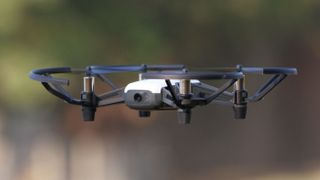
Specifications
Reasons to buy
Reasons to avoid
✅ You want a cheap starter drone: With a simple app and responsive controls, the Tello is an affordable way to master the basics of drone flight.
✅ You want a drone to travel with: Tiny dimensions and a featherweight build make the Ryze Tello easy to carry in a backpack.
❌ You need to fly conifdentally outdoors: Due to its low weight, the Tello doesn’t deal with anything more than a slight breeze.
❌ You want high-quality footage: Video is a weak point of the Tello, with 720p footage often appearing choppy and compressed.
Simple, lightweight and affordable, the Ryze Tello is a fun drone for first-time flyers. Despite its budget price tag, the Tello offers plenty: the battery delivered a reasonable 13 minutes of flight time in testing, while downward-facing light sensors allow the Tello to hover in place and perform a handful of automated tricks. Our review found image quality from the nose-mounted 5MP camera to be less impressive, with limited dynamic range and noticeable compression artifacts when streaming 720p HD video. Because video is beamed directly to your smartphone, the frame rate is affected by any drop in connection strength.
That said, we found the app refreshingly simple. It offers a straightforward way to pilot the Tello, with an on-screen twin-stick setup that’s rewardingly responsive. The theoretical range is 100m, but 30-40m is more realistic – which, given how even the slightest breeze can blow the 80g Tello off course, is not necessarily a bad thing. On a calm day, it's fundamentally an enjoyable drone to fly, zipping along at a rapid chop and reacting nimbly to intuitive inputs. The limited range is somewhat restrictive but, provided you don’t mind choppy video, it’s nevertheless the best starter drone around.
- Read our in-depth Ryze Tello review
Best FPV drone
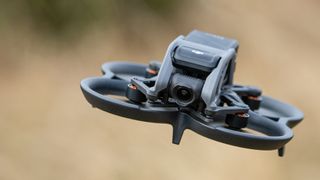
Specifications
Reasons to buy
Reasons to avoid
✅ You want to try flying an FPV drone: The DJI Avata is designed to make FPV flight easy for beginners, flying slow enough to be safe.
✅ You want a ready-to-fly FPV drone: The DJI Avata drone is good to go right out of the box, complete with a headset and controller.
❌ You usually fly drones alone: Rules in most regions require a spotter to maintain a line of sight while flying an FPV drone.
❌ You have a limited means: While the DJI Avata comes with everything you need to fly, it represents a serious investment.
If you’re looking to explore the increasingly popular niche of first-person drone flight, we think the DJI Avata is the best FPV drone out there. Using a compatible controller and pair of DJI Goggles, you can fly indoors or out while shooting impressive 4K/60p video. Pro shooters will enjoy support for DJI’s flat D-Cinelike profile, too. Besides one frustrating design decision – placing a microSD card slot inside one of the Avata’s blade rings – our review found it to be a well-built drone with impressive crash resistance, courtesy of its propellor guards. We felt it was easy to fly after just a few practice runs.
Several variants of DJI controllers are available for the Avata. These include standard remotes that will likely appeal to traditionalists, as well as motion-sensitive options like the DJI RC Motion 2, which sees the drone respond to the pilot’s hand movements. This will be the more intuitive option for many learners. Either way, you’ll be able to fly the Avata at top speeds of 60mph, while capturing unique footage. As long as you’re aware of its limitations – you’ll need a spotter if you’re shooting outdoors – the DJI Avata is an ideal choice for fledgling FPV pilots.
- Read our in-depth DJI Avata review
Best compact DJI alternative
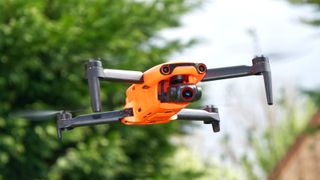
Specifications
Reasons to buy
Reasons to avoid
✅ You want to shoot in low light: Thanks to a generous 1/1.28-inch sensor, the Evo Nano+ is able to capture more light in dark conditions.
✅ You want to avoid restrictions: Although it’s a high-performance drone, the Nano+ weighs in at less than 250g, which makes it easier to fly legally.
❌ You’re a fan of DJI: If you’ve known and flown DJI drones before, the DJI Mini 4 Pro represents the more natural option, and it’s a little cheaper.
❌ You use third-party software: Unlike DJI, Autel doesn’t currently allow other companies to develop software tools for its drones.
DJI's Mini 4 Pro is our top pick in the sub-250g category, but if you want a compact drone from an alternative manufacturer, the colorful Evo Nano+ is a nice choice. With a big sensor and bright lens, our tests found that its camera performance trumps the DJI Mini 2, particularly in low-light situations. We found results after dark were much improved by locking the exposure to ISO 3200, too. The Autel fly app has improved considerably since we first reviewed the drone, with a more streamlined interface for stills and video.
Despite ducking under 250g limit, the Nano+ handles windy conditions fairly well for such a small drone. It felt highly controllable in testing, with three-way obstacle avoidance boosting our confidence, even if bright sunlight sometimes gave false proximity warnings. Its body feels less robust than the Lite+ (above) but rigidity improves when the battery is inserted. Overall, the Evo Nano+ is a superb small drone capable of producing stunning 4K/30p video. If you’re looking for a compact DJI alternative that flies below most registration requirements, the Evo Nano+ should be on your radar.
- Read our in-depth Autel Evo Nano+ review
Best FPV drone kit for beginners

Specifications
Reasons to buy
Reasons to avoid
✅ You want a ready-to-fly kit: With a drone, controller and goggles in the box, the Cetus Pro Kit makes it easy to get off the ground.
✅ You want an affordable FPV drone: Bundled with everything you need at a reasonable price, this is a fantastic first FPV kit.
❌ You want to shoot FPV videos: Though the Cetus Pro has a camera, it’s used only for the FPV feed and can’t capture stills or video.
❌ You don’t want to crash a drone: Crashes are part of FPV flying and you’ll need to accept that likelihood before flying the Cetus Pro.
A complete yet affordable FPV kit, we think the BetaFPV is the best way for beginners to try first-person drone flight. The bundle comes with a full FPV setup, including goggles, batteries and a console-style controller, which you can also use to practice in simulators. Delivered ready to fly, the drone itself is incredibly light. FPV flight makes crashes more likely, but the Cetus is built tough enough to withstand most impacts. Turtle Mode means it can right itself remotely, while three speed settings and three flight modes offer flexibility for learners to improve. We found Normal to be the easiest to fly, while Manual/Acro is the most difficult, requiring careful control and throttle regulation.
Besides the potential nausea associated with FPV flight, there are two main drawbacks with the Cetus kit. Battery life is limited to just 4-5 minutes per charge, making backup cells a necessity, and there’s no option to record stills or video. But if you want an affordable way to sample the FPV experience, we still think it’s the top option.
- Read our in-depth BetaFPV Cetus Pro Kit review
How to choose the best drone for you
How to choose the best drone for you
When choosing your ideal drone, budget is the obvious place to start. Flagship drones usually benefit from the largest sensors, highest video resolutions and latest pro-grade features, but these will usually set you back thousands. You’ll often find the best value by looking in the middle of the range, where models like the DJI Mini 3 Pro balance price, portability and performance. If you’re a novice in search of an affordable drone to get started, the Ryze Tello offers a decent experience for just $99 / £99.
Beginner fliers should consider drones with safety features like obstacle avoidance, which help to prevent mid-air collisions. Automated flight modes also make it easy to pull off set-piece manoeuvres without the need for professional flying skills. Similarly, drones with a follow-me mode take the effort out of tracking a subject.
Most drones allow you to use a smartphone as a controller, usually by inserting it into an included handset. If you’re a seasoned pilot with specific control requirements, it’s worth checking what remotes are compatible with a given model. Factors such as flight time, range and speed can also be crucial, depending on how you plan to fly.
If you plan to shoot aerial photos and videos, it’s worth thinking about how you plan to use your images. If you’re shooting to share on social, you might be happy with stabilized Full HD footage. But if you’re producing a short film or even working commercially, you should look for a drone with a large sensor that’s capable of recording 4K footage, with support for color profiles for greater editing flexibility.
Finally, keep size and weight in mind. Many of the drones above can be folded down to fit in a backpack, which makes them easier to travel with. Larger drones are less portable but tend to be more stable in the air. Any drones that weigh more than 250g are likely to attract registration requirements (see below).
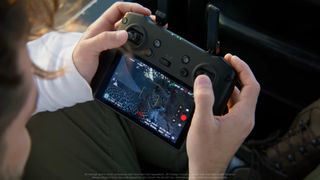
What are laws around flying a drone?
Drone laws exist to ensure a high level of safety in the skies, especially near sensitive areas like airports and national parks. They also aim to address privacy concerns that arise when camera drones fly in residential areas.
In several regions, such as the United States, drones weighing less than 250g are exempt from registration with civil aviation authorities. While registration might not be mandatory, it’s still necessary to follow local drone laws. This includes the requirement to keep your drone within sight at all times when airborne.
Different countries have different rules. Previously, in the UK, drones weighing less than 250g were exempt from registration. This has changed: owners of any camera-equipped drone must now register their aircraft with the Civil Aviation Authority and obtain an Operator ID. This registration carries an annual fee of £10.33 for individuals aged 18 and above.
If your drone exceeds 250g in weight, you will also require a Flyer ID. To obtain this, you need to pass an online test featuring 40 multiple-choice questions. The answers can be found in the Drone Code and are intended to promote safer flying practices.
For drones weighing less than 250g without a camera, neither ID is necessary. That said, you still need to comply with the UK’s drone laws. According to the Drone Code, this means maintaining visual contact with your drone, flying no higher than 120m above the ground, staying at least 150m away from populated areas, and avoiding restricted airspace, typically found near airports.
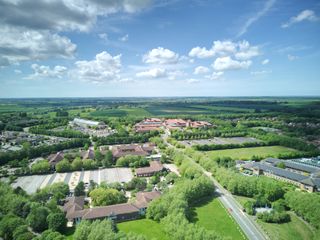
Are DJI drones illegal in the US?
In December 2020, the US government placed Chinese drone maker DJI on its ‘Entity List’ – the same trade blacklist that Huawei landed on in 2019. It is now prohibited for US federal agencies to purchase or use DJI drones, and several states, including Florida, have banned their use by government agencies.
However, it’s still perfectly legal for private customers to buy and fly DJI drones in the US, and there’s no sign that DJI will be banned from selling its products on the consumer market. The trade blacklist simply restricts its access to US technologies for future products. So while it may affect DJI’s supply chains, all the big retailers like Amazon are still selling the company’s drones as usual.
The decision of whether or not to buy DJI drones is a personal one, but we are very happy to continue recommending its flying cameras. DJI itself has strongly refuted the US blacklist decision, saying it “has done nothing to justify being placed on the list”. It has also stated that “DJI is not a military company in China, the United States or anywhere else.”
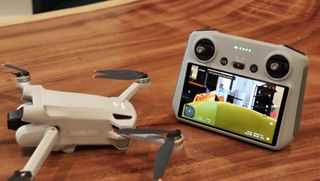
Who makes the best drone?
For many years, DJI has been the standout brand for drones with cameras. And while that continues to be the case, the Chinese company has come under fire in recent times – both from increased competition and run-ins with the US government. This hasn’t changed our opinion of whether or not you should buy a DJI drone (as you can read above), but it is good to finally see some healthy competition in the drone space.
In the US, Skydio became a standout brand for obstacle-avoidance powers, which make it a strong contender for those who need ‘follow me’ functionality. Sadly, Skydio recently closed its doors and is no longer in the consumer drone business – that's one less DJI rival. More recently, we’ve been impressed by the offerings from another Chinese company, Autel, which is making very good DJI rivals at different price points, while Potensic released an excellent DJI Mini 3 alternative for beginners the Potensic Atom. For now, we still think DJI is the best overall brand for drones, but there are now lots of alternatives, particularly if you have a specific use case for a flying camera.
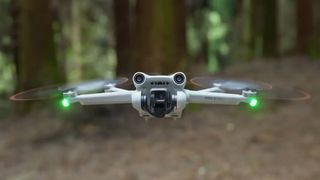
How to test drones
How we test drones
While the cameras are the main focus of the drones we review, we also test their flying performance to see how easy they are to operate. We assess safety features including the effectiveness of obstacle avoidance, how stable they are in flight especially in breezy conditions, actual top speeds, subject tracking features and if there's any latency – there's are all key considerations for high performing drones.
After testing the drone's battery life claims based on some real-world flights, we then move onto their cameras. Taking flight in daylight hours and in low light allows us to properly check image quality, along with shooting like-for-like videos using the drone's array of color profiles, maximum resolution (be it Full HD, 4K, 5,3K or in some cases 8K) and at the various frame rates available. Automated flight modes are also tested to see whether they're genuinely useful or fun gimmicks.
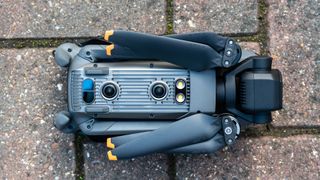
These videos are then assessed on a calibrated monitor, along with the drone's still photos (which we shoot in maximum resolution in both JPEG and raw, at various ISOs). What makes a good image? The lens should give crisp detail ideally from edge to edge with minimal fall-off in the corners, while at the other extreme the camera sensor should handle noise well at the high ISOs needed for low light shooting. Those tests tells us the reasonable limits of the drone's camera. We then combine these results with our overall impression of the drone's design, features and value to produce our final verdict.
Get daily insight, inspiration and deals in your inbox
Get the hottest deals available in your inbox plus news, reviews, opinion, analysis and more from the TechRadar team.

Tim is the Cameras editor at TechRadar. He has enjoyed more than 15 years in the photo video industry with most of those in the world of tech journalism. During his time as Deputy Technical Editor with Amateur Photographer, as a freelancer and consequently editor at Tech Radar, Tim has developed a deeply technical knowledge and practical experience with cameras, educating others through news, reviews and features. He’s also worked in video production for Studio 44 with clients including Canon, and volunteers his spare time to consult a non-profit, diverse stories team based in Nairobi. Tim is curious, a keen creative, avid footballer and runner, and moderate flat white drinker who has lived in Kenya and believes we have much to enjoy and learn from each other.
- Chris Rowlands
- Mark WilsonSenior news editor
- Michelle Rae UyContributor
